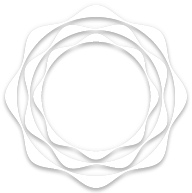Beirut a Cultural Hub (1955-1975) Odile Mazloum
As seen through the Eyes of: A patron, an artist, a professor, and a gallerist
Author WAFA ROZ

Beirut a Cultural Hub (1955-1975)
The Dalloul Art Foundation (DAF) presents a four-part documentary series on the evolution of the art scene in Beirut during the 1950s-1970s. The series is based on life-history interviews which were conducted and filmed by DAF in 2020. The interviews chosen for this exhibition cover the social transformations that transpired during the three decades following Lebanon’s independence in 1943. The four protagonists in the series include an art patron, Cesar Nammour; a sculptor, Mona Saudi; a professor, David Kurani; and a gallerist, Odile Mazloum. Each of these characters lived during Beirut’s heydays, otherwise known as the “golden sixties,” and experienced first-hand the booming cultural scene of the city. Most importantly, they participated in making that scene.
Through personal narratives, this four-part documentary series narrates a key feature of the golden sixties: the blossoming of Beirut’s art scene into a vibrant and diversified cultural hub. It also narrates the story of the dispersal of that cultural hub after the onset of the Lebanese civil war in 1975. Artists relocated and cultural spaces shutdown during the war, including art galleries and art institutions, forcing many to cope and adapt to a new social reality. In a state of fragility, a mélange of passion and despair shines through each personal narrative.
During Lebanon’s formative decades of state-building (1952-1970), Beirut was becoming the cosmopolitan center of the Arab world. The financial sector thrived within the country’s free-market economy. Educational institutions and instructional spaces ballooned alongside publishing houses, galleries, and museums. Most notably, a café society flourished, part of which was the famous Horseshoe café that attracted many intellectuals and artists. Lebanon’s diverse social fabric, religious pluralism, and laisser-faire economy attracted investors, thinkers, writers, and artists from all around the Middle East, Europe, and the United States. Knowledge production and freedom of expression became a staple of Beirut’s golden era. For most of the Arab world, Lebanon became a safe haven of free expression and free association.
However, this period of state-building was also one of political contestation over Lebanon’s place in the Arab World. The Lebanese political scene was heavily affected by regional and international political antagonisms. The country’s political environment was caught up in a fierce political struggle between adherents of pan-Arabism versus Lebanese nationalism and leftist movements versus right-wing politics. In addition, the Arab-Israeli conflict, and the relocation of the Palestinian Liberation Organization (PLO) to Lebanon in (1968-1982) heightened political tensions. After a series of political struggles, the Lebanese civil war broke out in 1975. Cosmopolitan Beirut was at an impasse.
The violence of the war divided Beirut into West and East Beirut. As a result, several art spaces shifted away from central Beirut and relocated to other regions in Lebanon. Key art patrons, artists, and innovators of the pre-war era adapted to a new disruptive reality that shaped the art scene in the post-war years.
The Ramzi and Saeda Dalloul Art Foundation, 2022
This video was exhibited at the Contemporary Art Museum of Lyon in the Beirut and the Golden Sixties: A Manifesto of Fragility, as part of the Lyon Biennal. Curated by Sam Bardaouil and Till Fellrath.
Biographies
Odile Mazloum – ‘a Gallerist’ (1945-)
Born in 1945, Odile Mazloum is a Lebanese visual artist/painter and gallerist. She ran her first art gallery, L’Amateur, at nearly the age of twenty years old. L’Amateur was located on Hamra street a couple of steps up the corner side of Horseshoe café. The shop showcased and sold jewelry that was part of the family business, in addition to objets d’art, antiquities, paintings, drawings, and prints.
Due to the escalation of the civil war, in 1977, Odile had to leave L’Amateur, which was located in West Beirut and move to East Beirut. Later, Odile and her husband Samir Andraous moved to Kaslik, Jounieh where she opened her self-owned gallery in c.1987, and named it: ALWANE meaning ‘colors’ in Arabic.
In the mid-1990s, the war was over and renovation of downtown Beirut had started. In 2004, Odile opened a second branch of ALAWANE, within the poche district of Saifi Village in downtown Beirut. Sadly, Odile had to close her shop in Saifi Village after it was affected by the August 4th, 2021 blast which destroyed the Beirut port and most of the area surrounding it. Once again, she moved her entire business back to Kaslik, Jounieh.
Besides discovering and promoting new talents, including Lebanese and international artists, Odile Mazloum exhibited worldwide and taught art for more than twenty-five years at several educational institutions in Lebanon.
Check out other Beirut a Cultural Hub documentaries:
Beirut a Cultural Hub (1955-1975) Cesar Nammour
Beirut a Cultural Hub (1955-1975) Mona Saudi
Beirut a Cultural Hub (1955-1975) David Kurani


